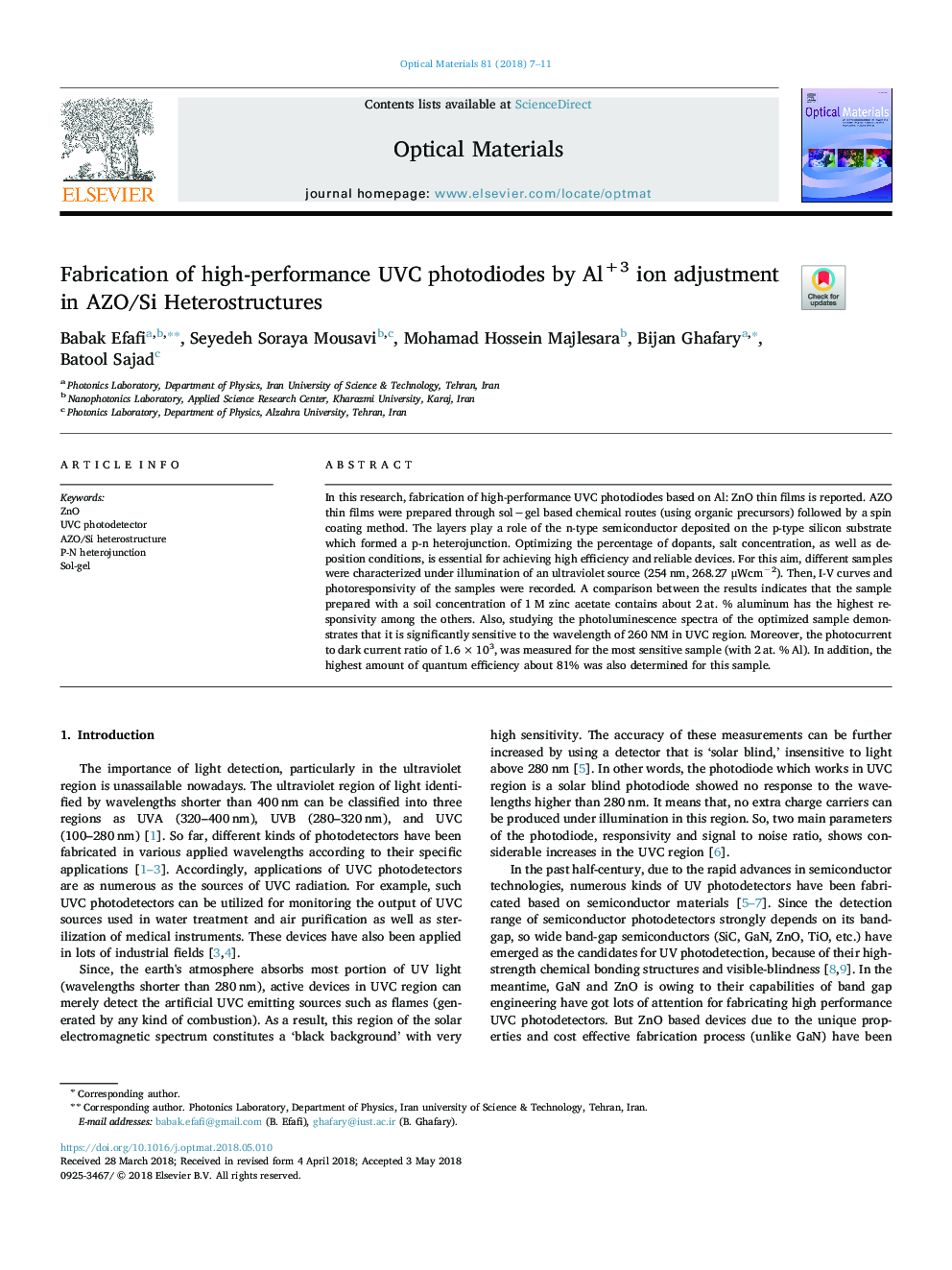| Article ID | Journal | Published Year | Pages | File Type |
|---|---|---|---|---|
| 7906213 | Optical Materials | 2018 | 5 Pages |
Abstract
In this research, fabrication of high-performance UVC photodiodes based on Al: ZnO thin films is reported. AZO thin films were prepared through solâgel based chemical routes (using organic precursors) followed by a spin coating method. The layers play a role of the n-type semiconductor deposited on the p-type silicon substrate which formed a p-n heterojunction. Optimizing the percentage of dopants, salt concentration, as well as deposition conditions, is essential for achieving high efficiency and reliable devices. For this aim, different samples were characterized under illumination of an ultraviolet source (254â¯nm, 268.27 μWcmâ2). Then, I-V curves and photoresponsivity of the samples were recorded. A comparison between the results indicates that the sample prepared with a soil concentration of 1â¯M zinc acetate contains about 2â¯at. % aluminum has the highest responsivity among the others. Also, studying the photoluminescence spectra of the optimized sample demonstrates that it is significantly sensitive to the wavelength of 260 NM in UVC region. Moreover, the photocurrent to dark current ratio of 1.6â¯Ãâ¯103, was measured for the most sensitive sample (with 2â¯at. % Al). In addition, the highest amount of quantum efficiency about 81% was also determined for this sample.
Keywords
Related Topics
Physical Sciences and Engineering
Materials Science
Ceramics and Composites
Authors
Babak Efafi, Seyedeh Soraya Mousavi, Mohamad Hossein Majlesara, Bijan Ghafary, Batool Sajad,
